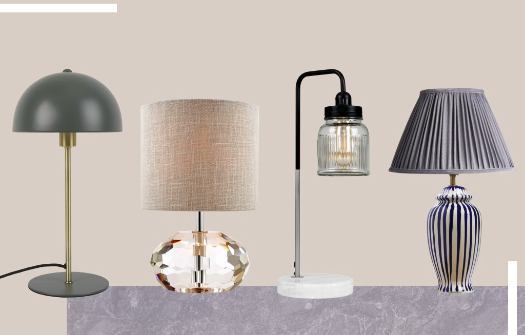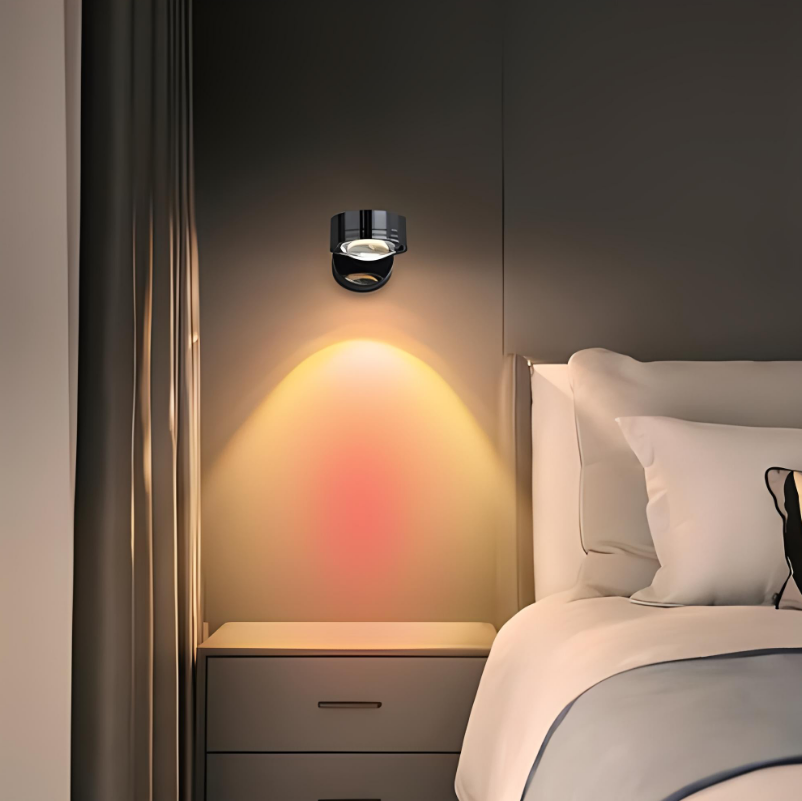Pendant lights serve a multifaceted role in interior design, particularly in spaces like bedrooms where ambiance and functionality are paramount. These fixtures are typically suspended from the ceiling by a cord, chain, or rod, allowing them to hang at varying heights. Their primary function is to provide focused illumination, making them ideal for tasks such as reading or working on hobbies.
Unlike traditional overhead lighting, pendant lights can be strategically placed to create pools of light that enhance specific areas of the room, such as bedside tables or reading nooks. This targeted lighting not only improves visibility but also adds a layer of depth and dimension to the overall design of the space. In addition to their practical uses, pendant lights also serve as significant decorative elements that can elevate the aesthetic appeal of a bedroom.
They come in a myriad of styles, materials, and colors, allowing homeowners to express their personal taste and complement existing decor. Whether opting for a sleek modern design or a vintage-inspired piece, pendant lights can act as statement fixtures that draw the eye and create focal points within the room. Furthermore, their versatility means they can be used in various configurations—single pendants for minimalist designs or clusters for a more dramatic effect—making them an essential consideration in any bedroom lighting plan.
Choosing the Right Style for Your Bedroom
Defining Your Bedroom’s Style
Selecting the right pendant light Decozux for your bedroom is crucial in achieving a cohesive look that reflects your personality and complements your existing decor. The first step in this process is to consider the overall theme of your bedroom. For instance, if your space leans towards a contemporary aesthetic, sleek metal fixtures with clean lines and geometric shapes may be the perfect fit. On the other hand, if your bedroom exudes a more rustic charm, you might opt for pendant lights made from natural materials like wood or wrought iron, which can add warmth and character to the space.
Considering Scale and Proportion
The key is to ensure that the style of the pendant light harmonizes with other elements in the room, such as furniture, bedding, and wall colors. Another important factor to consider is the scale and proportion of the pendant light in relation to your bedroom’s dimensions. A large, bold pendant can serve as a striking centerpiece in a spacious room, while smaller fixtures may be more appropriate for compact spaces.
Layering Lighting for a Well-Rounded Atmosphere
Think about how the style of the pendant light interacts with other lighting sources in the room. Layering different types of lighting—ambient, task, and accent—can create a well-rounded atmosphere that enhances both functionality and aesthetics. This approach allows you to create a space that is both inviting and functional.
Finding the Perfect Balance
Ultimately, choosing the right style involves balancing personal preferences with practical considerations to create a harmonious and inviting bedroom environment. By considering your bedroom’s theme, scale, and lighting needs, you can select a pendant light that not only reflects your style but also enhances the overall ambiance of your space.
Sizing and Placement of Pendant Lights
When it comes to pendant lights, proper sizing and placement are essential for both functionality and visual appeal. The size of the pendant should be proportionate to the dimensions of the room and the furniture within it. A common guideline is to choose a pendant light that is approximately one-third the width of the surface it hangs above—be it a bedside table or a dresser.
This ensures that the fixture does not overwhelm the space while still providing adequate illumination. Additionally, consider the height at which the pendant will hang; it should be low enough to provide effective lighting but high enough to avoid obstructing movement or sightlines within the room. Placement is equally important when integrating pendant lights into your bedroom design.
A popular choice is to hang pendants on either side of the bed as bedside lighting alternatives to traditional lamps. This not only frees up valuable surface space but also creates a balanced look on either side of the bed. If you have a reading nook or a cozy corner in your bedroom, consider suspending a pendant light above it to create an inviting atmosphere for relaxation.
Furthermore, think about how the light will interact with other elements in the room; for example, placing a pendant light near mirrors can enhance brightness and create an illusion of more space. By carefully considering both size and placement, you can maximize the impact of pendant lights in your bedroom.
Incorporating Pendant Lights into Your Bedroom Decor
Incorporating pendant lights into your bedroom decor requires thoughtful consideration of how these fixtures can enhance existing design elements while also serving their functional purpose. One effective approach is to use pendant lights as part of a layered lighting scheme that includes ambient, task, and accent lighting. For instance, you might choose a striking pendant light as your primary source of illumination while supplementing it with wall sconces or table lamps for additional light where needed.
This layering not only provides flexibility in lighting options but also adds depth and interest to your decor. Another way to seamlessly integrate pendant lights into your bedroom is by selecting fixtures that echo other design elements within the space. For example, if your bedroom features metallic accents—such as brass hardware or silver picture frames—consider choosing pendant lights with similar finishes to create a cohesive look.
Alternatively, if your decor includes bold colors or patterns, you might opt for pendants that incorporate those hues or designs to tie everything together visually. Additionally, think about how different materials can complement each other; pairing glass pendants with wooden furniture can create an appealing contrast that enhances both elements. By thoughtfully incorporating pendant lights into your decor, you can create a harmonious and inviting atmosphere that reflects your personal style.
Creating Ambiance with Pendant Lights
Creating ambiance in your bedroom is an art that involves careful consideration of lighting choices, including pendant lights. The right pendant fixture can dramatically influence the mood of the space, transforming it from a stark environment into a warm and inviting retreat. To achieve this effect, consider using dimmable pendant lights that allow you to adjust brightness levels according to your needs and preferences.
Soft, warm light can create a cozy atmosphere perfect for winding down at the end of the day, while brighter settings are ideal for activities such as reading or getting dressed. In addition to brightness control, think about the color temperature of the bulbs used in your pendant lights. Warmer tones (around 2700K) tend to evoke feelings of comfort and relaxation, making them ideal for bedrooms where tranquility is desired.
Conversely, cooler tones (above 3000K) can promote alertness and focus but may not be suitable for creating a restful environment. Furthermore, consider layering your lighting sources; combining pendant lights with other fixtures like floor lamps or wall sconces can help create varied levels of illumination that enhance the overall ambiance. By thoughtfully selecting and positioning your pendant lights, you can craft an inviting atmosphere that encourages relaxation and rejuvenation.
Maintenance and Cleaning of Pendant Lights
Importance of Cleaning Pendant Lights
Maintaining and cleaning pendant lights is essential not only for their longevity but also for ensuring they continue to enhance your bedroom’s aesthetic appeal. Dust and grime can accumulate on light fixtures over time, diminishing their brightness and overall appearance.
Regular Cleaning Routine
To keep your pendant lights looking their best, establish a regular cleaning routine that involves dusting them with a soft cloth or microfiber duster at least once a month. This simple task can help maintain their appearance and prevent dust buildup.
Deep Cleaning and Maintenance
For more thorough cleaning, especially if they are made from glass or metal, you may need to use mild soap and water or specialized cleaning solutions designed for specific materials. When cleaning pendant lights, always ensure they are turned off and cooled down before handling them. If possible, remove any detachable parts such as shades or bulbs for easier access during cleaning. Pay special attention to areas where dust tends to gather, such as crevices or decorative elements on the fixture.
Preventing Wear and Damage
Additionally, check for any signs of wear or damage during your maintenance routine; replacing burnt-out bulbs promptly not only improves functionality but also prevents further issues down the line. By prioritizing regular maintenance and cleaning, you can ensure that your pendant lights remain beautiful and functional additions to your bedroom decor.
Energy-Efficient Options for Pendant Lights
As sustainability becomes increasingly important in home design, energy-efficient options for pendant lights are gaining popularity among homeowners looking to reduce their environmental impact while still enjoying stylish lighting solutions. One of the most effective ways to achieve energy efficiency is by opting for LED bulbs instead of traditional incandescent ones. LED bulbs consume significantly less energy—up to 80% less—while providing comparable brightness levels and longer lifespans.
This means fewer replacements over time and lower energy bills without sacrificing illumination quality. In addition to choosing LED bulbs, consider selecting pendant fixtures designed with energy efficiency in mind. Many manufacturers now offer products that incorporate energy-saving technologies such as integrated LED systems or smart lighting features that allow users to control brightness levels remotely via smartphone apps or voice commands.
These innovations not only enhance convenience but also contribute to overall energy savings by allowing users to tailor their lighting usage according to their needs. By embracing energy-efficient options for pendant lights, you can enjoy stylish illumination while making a positive impact on both your wallet and the environment.
Budget-Friendly Designer Pendant Light Alternatives
For those who desire designer-quality pendant lights without breaking the bank, there are numerous budget-friendly alternatives available that offer style and sophistication at more accessible price points. Many retailers now provide replicas or inspired designs that mimic high-end looks without compromising on quality or aesthetics. Shopping at home goods stores or online marketplaces can yield impressive finds that capture the essence of designer pieces while remaining budget-conscious.
Another approach is to explore DIY options for creating unique pendant lights tailored specifically to your taste and decor style. With some creativity and basic crafting skills, you can transform everyday materials—such as mason jars, wooden crates, or even fabric—into stunning light fixtures that add character to your bedroom without incurring hefty costs. Additionally, consider shopping second-hand at thrift stores or flea markets; often these venues offer vintage or one-of-a-kind pieces that can serve as eye-catching focal points in your space.
By exploring these budget-friendly alternatives, you can achieve a designer look in your bedroom without overspending while still enjoying beautiful pendant lighting that enhances your overall decor.





